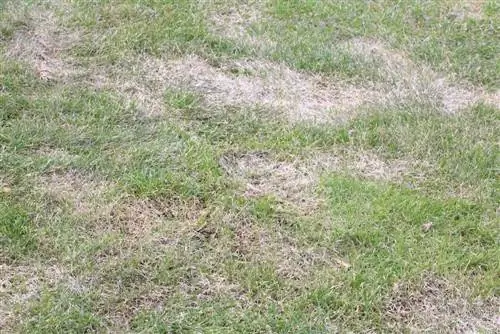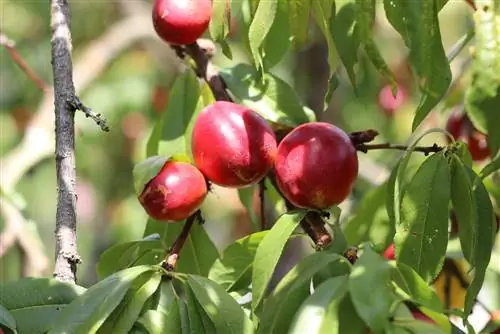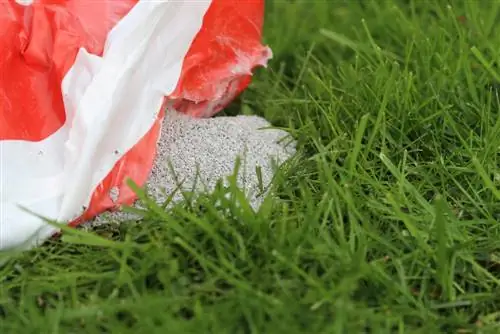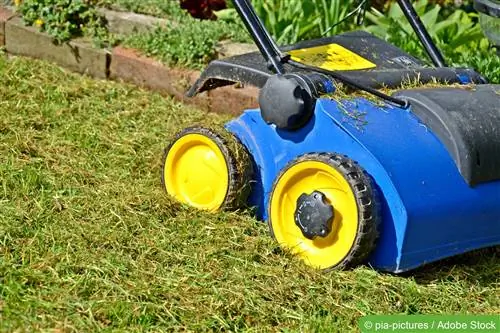- Author admin [email protected].
- Public 2023-12-17 03:39.
- Last modified 2025-01-24 12:45.
The cold winter season and hot summer months put every lawn to a tough test. With the help of scarifying, garden owners can significantly improve the appearance and growth of their lawn. This care measure contributes significantly to the regeneration of the grass plants. The correct sequence and the right time are just as important as the technical execution. The dense carpet of grass then shines again in a rich shade of green.
Properly scarifying
During the growing season, a variety of residues accumulate on the lawn. This includes old grass clippings, wild weeds and overgrown moss. Over time, these components compress into a dense mass, which makes it difficult to absorb water. This also leads to a reduced quality of the soil. The grass roots then do not receive enough oxygen and the supply of nutrients also deteriorates. As a result, the lawn looks sickly, thin and unkempt. The phenomenon is usually noticeable in spring, when only a few isolated grasses start to grow. Scarifying the lawn has become an established countermeasure. However, it is not recommended to use this method too often. Otherwise, the grass plants will suffer instead of looking he althier.
- Important care measure for the grass area
- Provides a he althy appearance
- Can be used as a rejuvenation and recovery treatment
- Removes clover, moss and weeds
- Matted lawns are combed out
- Afterwards, grass roots can breathe better
- The nutrient supply to the roots is optimized
- Grass plants grow more lush and dense again
- Do not use the scarifier more than twice a year
- Ideally in spring and autumn
Use in spring
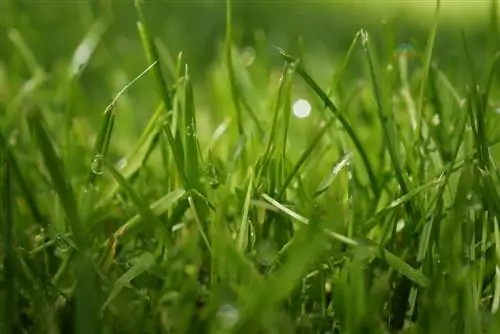
Spring is a good time for scarifying. At this time of year, the soil and the lawn have a particularly quick ability to regenerate. However, this measure should not take place right at the beginning of spring. After the cold winter months, the grass plants are still weakened and react sensitively to them. In addition, the ground must no longer be frozen at the time of scarifying. It is important to have pleasantly warm temperatures so that the grass can grow back quickly. In contrast, the grass carpet suffers from intense heat and dryness in the summer months, meaning that it can no longer recover sufficiently afterwards. In addition, fertilizing should always be done at the beginning in order to sufficiently strengthen the grass plants. In addition, a certain sequence must be followed when proceeding so that the lawn is well prepared.
- The month of April is ideal for this care step
- After long winters only carried out in May
- Earth must be completely thawed
- Soil must not be completely dry
- A slightly moist soil is good
- Dry weather is ideal
- Temperatures of 10-20 °C are good
- Use nitrogen-containing fertilizer beforehand
- Then mow the lawn at least twice
- Only run in dry weather
- The lawn then grows more beautiful and lush green in the summer
- Dispose of any plant material in the compost
- Sowing grass seeds in bare spots
Note:
Before using the scarifier, you should make sure that no more hard frost periods are to be expected in the following days.
Perform in the fall
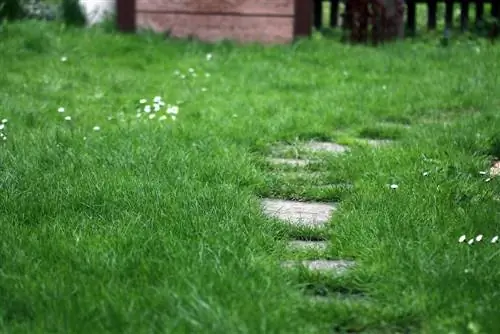
After the often very hot and dry summer months, the lawn often looks very poor. As a result, brown and bald spots have formed. That's why the scarifying process can still be carried out quite easily even in autumn. The use of a scarifier is particularly necessary if the lawn has been used intensively and has been mowed frequently. During this time of year, the growth phase in the garden is coming to an end. The plants are starting to really prepare for winter. By clearing the lawn of moss, plant residues and weeds, it is usefully prepared for the cold season. However, a few months must always pass between the first and second part of the annual scarifying process so that the grasses are not put under too much strain.
- The first real autumn days are ideal
- Do it earlier after cool summer months
- Already mid to end of August
- Use later following warm summers
- Only early to mid-September
- Dry weather is ideal, with residual heat in the ground
- Wait for long periods of rain
- Afterwards, the wetness of winter can run off better
- Danger of compaction is reduced
- Then incorporate winter fertilization
- Fertilizers with potassium are optimal
- Strengthen the resistance of grasses
Tip:
You should do the scarifying by mid-October at the latest. Otherwise the grasses will no longer have enough time to regenerate before the onset of winter.
Instructions: Scarifying

If you treat your lawn to this healing treatment every year, you will receive a densely growing carpet of lawn with a he althy turf. Afterwards, the grass area shines in a lush green, without the moss and mulch of the previous months. However, this method doesn't make sense if a lot of rain has fallen. If the soil is too wet, it can quickly happen that the scarifier pulls out the entire turf. This results in unsightly gaps. In addition, freshly laid lawns should never be treated with it. In addition, it is important to avoid setting the scarifier too low. If the result was not satisfactory in spring, it is better to repeat the process in autumn after a rest period of a few months. As a rule, the lawn carpet is first scarified in a longitudinal direction. Next time the treatment will follow in the transverse direction.
- Lawn must have grown for at least 2-3 years
- The prerequisite is deeply mown grass
- Maximum height may be 4 cm
- Grasses must be dry
- Set the required height of the blades on the scarifier
- Suitable cutting depth is approx. 3 mm
- For extremely matted and overgrown areas, go deeper
- Then a cutting depth of 5 mm is ideal
- Work the grass area in evenly extending lines
- Alternate direction each time
Tip:
A short test run with the scarifier will give you information about whether the device works accurately and is set correctly. A less visible section of the lawn is suitable for this.

